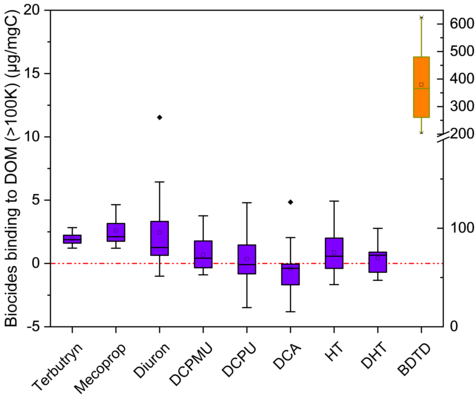Quantifying the binding of different biocides and heavy metals to centrifugally fractionated DOM by dialysis equilibrium
In the urban area during the rain events, pollutants in building surfaces like heavy metals (Cu/Zn) and biocides appear in the rain water due to the flushing and leaching processes, and spreading around in the environment. Unfortunately, there does not have a high efficiency on-site treatment facility that can be used to mitigate the risks they posed to the ecosystem. Therefore, we carried out some studies aiming to understanding the interactions between heavy metals/biocides with DOM and providing knowledge in treatment system designing.
In previous study, heavy metals and biocides were proved can interact with the DOM. But that is a qualitative result. To describe the interactions precisely, dialysis equilibrium method is used in the study. Before starting the dialysis equilibrium, the used DOM was fractionated into different parts by centrifuge according to their molecular weight, as DOM is a complicated mixture, different molecular weight means different structure and binding ability to pollutants.
Quantification the binding of pollutants with fractionated DOM were carried out individually. Samples inside and outside the dialysis bag were collected. For heavy metals, they were analyzed by AAS after acid digestion removal the DOM. For biocides, they were analyzed by HPLC-MS. The influence from Cu on biocides binding with DOM was evaluated as well.
With these studies, pollutants binding with fractionated DOM are investigated compared.

| Project Leader | Prof. Dr. Brigitte Helmreich |
| Researcher | Panfeng Zhu, M.Sc. |
| Funding | China Scholarship Council |